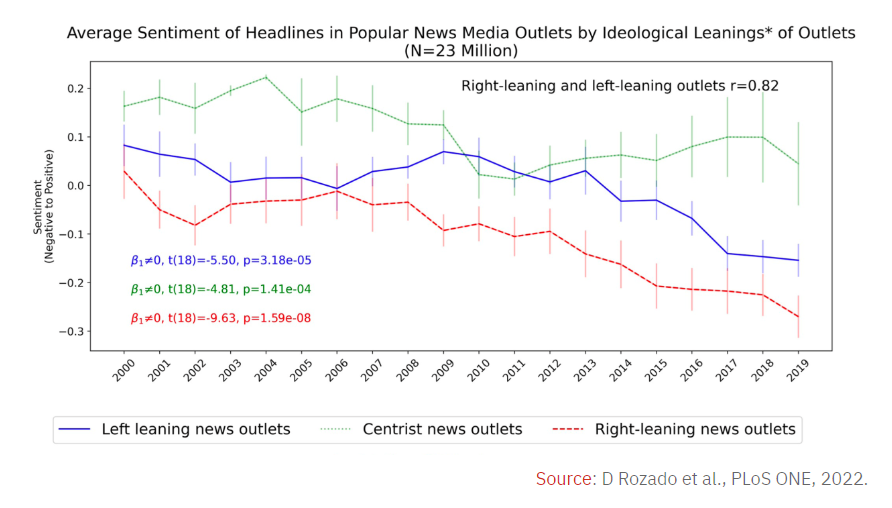
Zeno Thinks: Cutting through in the age of Angertainment
We are in the "Angertainment" media age. News, from the fastest growing sources at least (such as GB News in the UK), has shaken off bothersome impartiality, grown ever more emotional and actively sought to provoke. Inflammatory headlines now drive a lucrative business model that seems to be only going one way.
A March 2023 study in the journal Nature Human Behaviour offers valuable perspective. The title says it all: “Negativity drives online news consumption.” Add a negative word to your headline (harm, heartbroken, ugly, troubling and, yes, angry), and you get 2.3% more clicks on average. Conversely, adding a positive word (benefit, laughed, pretty, favourite, kind) achieves the opposite result.
Another study determined that the prevalence of angry headlines increased by 104% over the past 20 years – and that this applied to all parts of the political spectrum, from far left to the furthest reaches of the right. Anger doesn’t discriminate, in fact we are normally angry about the same topics for opposite reasons.
(image below)
This means thoughtful balanced pieces, so desperately needed in these turbulent times, are not only expensive to produce, but are demonstrably less loved by consumers.
But hasn’t news always sold the sensational? To a degree, yes – it was way back in the 19th century that William Randolph Hearst coined the phrase “if it bleeds it leads”. But by and large these stories were based on fomenting fear about more distant subjects and in the absence of social media there was no real participatory element.
In many cases brands benefited from this fear by selling comfort, stability, feelings of the familiar and a sense of safety, so they managed to cut through.
Today, however, fear has given way to frustration, a sense of injustice and loss of control. In combination these elements seem to have eroded our coping skills and turned us into aggressive swivel-eyed loons (Gavia articulata oculos) both online and increasingly offline.
Worryingly, people can’t help but get off on it. It sparks a fight-or-flight response that fills you with energy, gives you a sense of voice, a tribe to back. Nobody can reasonably expect their opinion on Twitter (sorry, X) to change the minds of their equally passionate opponents, but social media has become performative. You just can’t help yourself, even if sometimes you regret it.
So, what’s a brand to do?
Lurking at the edge of these impassioned debates are many brands still following the traditional method of building salience by just being there, hoping to gradually etch into the consumer's mind. But this method faces significant hurdles.
The age of Angertainment is characterised by highly polarised social discourse, in which the two warring sides are not willing to give quarter.
We are not, to be clear, advocating regressive values. Quite the opposite in fact: brands that succeed long term will be those that align themselves with the progressive side of the current discourse. Martin Luther King, Jr. hit the nail on the head half a century ago with his observation that “the arc of the moral universe is long, but it bends toward justice”.
So, don’t bring a cockroach to a cock fight. Remember you are trying to get the attention of those preoccupied by righteous noisy rage. Needlessly provocative assertions are unhelpful, but you must take control and make full-throated, sometimes difficult, statements.
Engage in meaningful dialogues, demonstrate tangible actions, participate in social responsibility initiatives and commit to sustainability and fostering diversity and inclusion, both externally and – just as importantly – within your organisations.
And while silence remains an option, be aware that the goalposts have moved. Saying nothing is now called “Greenhushing”, “Socialhushing” or even “Humanehushing”. And if you create a brand vacuum, rest assured that it will quickly be filled by angry narratives you cannot control.
Full report here




